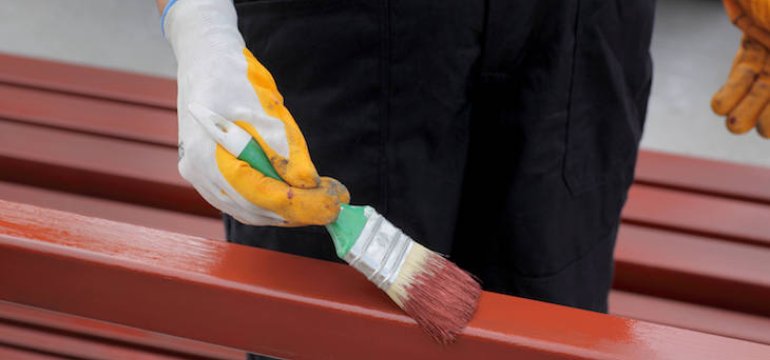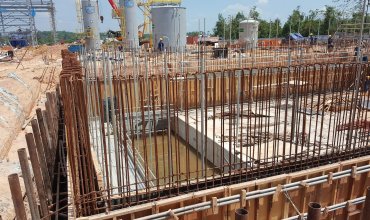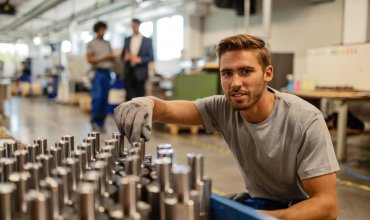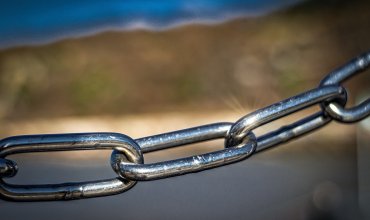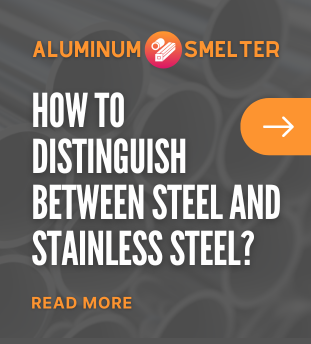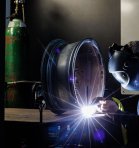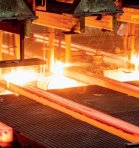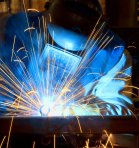Steel is one of the most important construction materials used around the world. Its versatility, strength and recyclability make it indispensable in many areas of life - from construction to the automotive industry to the creation of everyday objects. However, steel has one major drawback: it is prone to corrosion. In the Polish climate, especially through the changing weather conditions, steel is particularly prone to rusting. That is why it is so important how to protect steel from rust effectively and for a long time.
What is corrosion and why is it dangerous?
Corrosion is the process of destruction of materials, mainly metals, as a result of chemical reactions with the environment. In the case of steel, we are most often talking about its reaction with oxygen and moisture, which leads to the formation of iron oxides, or rust. Rust doesn't just spoil the appearance of metal parts; much more worrisome are its structural effects. Rust causes a weakening of the material's strength, which in the long term can lead to its complete destruction.
Mechanism of corrosion
Steel, being an alloy of mainly iron with a small amount of carbon, is susceptible to oxidation. In the presence of oxygen and water, iron oxides begin to form on the surface of the steel. This process starts at the surface, but if not effectively stopped, it can destroy the entire metal component. Particularly in cases where corrosion acts simultaneously with mechanical loads, catastrophic structural failure can occur.
What are the most effective methods of protecting steel from corrosion?
Corrosion protection of steel can take many forms, depending on the type and purpose of the component and the conditions under which it will be operated. There are many methods of protecting steel, which can be divided into several basic categories:
Surface coating
One of the most popular ways of how to protect steel from rust is to coat it with various materials that insulate it from the environment. Among the most common methods are:
Anti-corrosion paints
The use of anti-corrosion paints is one of the most versatile methods of protecting steel. The paint forms a protective layer that protects the metal from moisture and oxygen. It is important to thoroughly clean the steel surface of rust and other contaminants before applying the paint.
Varnishing and powder coating
Varnishes are effective because they form a hard, weather-resistant protective layer. Powder coating, on the other hand, involves applying a dry powder (usually polymer-based) to the surface of the metal and then curing it at high temperatures. This type of coating is extremely resistant to corrosion and mechanical damage.
Metallic coatings
Another approach is to coat steel with thin layers of other, more corrosion-resistant metals, such as zinc, chromium, or aluminum. Hot-dip galvanizing is one of the most commonly used processes - it involves immersing a steel component in molten zinc, which forms a protective layer against corrosion.
Chemical protection measures
Steel can also be protected by using a variety of chemical protectants. Among the most effective techniques are:
Corrosion inhibitors
Corrosion inhibitors are chemicals that are added to the steel's environment to slow down the corrosion process. Inhibitors can work in a variety of ways, such as by forming a protective layer on the surface of the metal that restricts oxygen and moisture from reaching the steel.
Phosphating
Phosphating is a chemical process during which a thin layer of metal phosphates is formed on the surface of steel. This layer acts as a protective barrier against corrosion and improves the adhesion of paint coatings.
Fitting and electroplating
Striping and electroplating are techniques in which steel is treated chemically to create a thin, protective layer on its surface. Electroplating involves the electrolytic deposition of one metal on the surface of another metal, which creates a protective layer.
Structural protection
Another way how to protect steel from rust is to use special structural and technological solutions that minimize the risk of corrosion.
Designing appropriate structural systems
One of the most effective ways to protect steel against corrosion is to plan the structure properly. It is necessary to avoid creating nooks and crannies where moisture can accumulate, and to use solutions that allow water to drain freely from metal surfaces.
Cathodic protection
Cathodic protection is a technique in which a steel component of a structure is protected from corrosion by using an anodic protection system. This involves placing another, more easily oxidized metal near the steel to corrode instead of the steel. In this way, the resulting oxides will protect the actual component.
Insulation and prevention
Prevention plays a huge role in protecting steel from rust. There are a number of procedures that, when applied regularly, can significantly extend the life of metal structures.
Regular inspection and maintenance
Regular inspection of the condition of steel structures is crucial. Quickly noticing emerging signs of corrosion and removing them can prevent further deterioration of the component. Maintenance, such as surface cleaning and painting, should be carried out on a schedule to keep the steel in the best possible condition.
Proper storage and protection
Proper storage and protection of steel components before use is also important. Steel should be stored in a dry and well-ventilated place, away from moisture and direct contact with the ground.
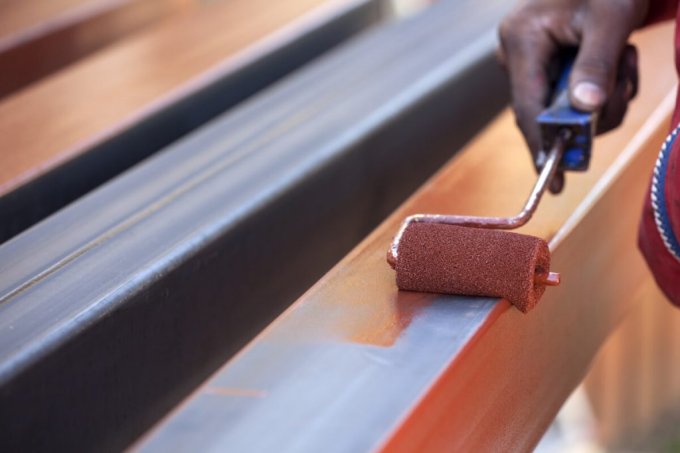
Expert opinions: which protection is best?
Opinions of experts in the field of anti-corrosion can vary depending on the specifications of a particular project, environmental conditions and budget. Below are some expert statements on effective methods of protecting steel from rust.
Dr. Jan Nowak, building materials specialist
"How to protect steel from rust so that it is effective for many years? First of all, the right choice of protective coating plays a key role here. In my opinion, one of the most effective methods is hot-dip galvanizing. This process creates a durable protective coating that will protect the steel even in harsh weather conditions. It is also important to take care of surface maintenance, regular painting and the use of corrosion inhibitors."
Prof. Dr. Maria Kowalska, materials chemistry expert
"Corrosion protection of steel is a complicated issue that requires a multifaceted approach. Personally, I believe that a combination of several methods, such as chemical coating, anti-corrosion paints and proper structural design, can give the best results. Phosphating and striping are techniques that work well in industrial settings. Equally important is technical education about corrosion and systematic technical inspections of metal structures."
Applications of corrosion protection in Poland
In Polish climatic conditions, corrosion protection is of particular importance. High humidity, frequent rainfall and changing temperatures create ideal conditions for the formation of rust on steel surfaces. Therefore, corrosion protection techniques are widely used in various industries and beyond.
Construction
In the construction industry, the use of appropriate protective methods is essential to ensure the longevity of structures. For example, in bridges and overpasses, hot-dip galvanizing and anti-corrosion paints are mainly used. In residential and industrial buildings, where steel is often hidden inside structures, powder coatings and electroplating are also used.
Automotive industry
In automobiles, one of the most common methods of corrosion protection is coating steel components with special catalytic coatings and electroplating. Steel used in vehicle manufacturing is often further protected by phosphating and powder coating, which significantly extends its life.
Marine industry
Specific conditions in the marine environment, such as high humidity and salinity, require special corrosion protection measures. In shipyards and on ships, steel is usually protected by multilayer paint systems and galvanic anodes. Corrosion inhibitors and regular maintenance are also often used.
The future of steel corrosion protection
Steel corrosion protection technologies continue to evolve. In the future, we can expect the introduction of new materials and methods that will be even more effective in the fight against corrosion.
Nanotechnology in steel protection
Scientists are researching the use of nanotechnology for corrosion protection. Nanocoatings can form extremely thin yet highly resistant protective layers, which could revolutionize modern steel protection methods.
New materials and coatings
Innovative materials, such as self-repairing coatings, could significantly increase the lifespan of steel structures in the future. Such coatings have the ability to automatically repair minor damage, preventing the corrosion process from spreading further.
Ecological methods of protection
With increasing environmental awareness, more environmentally friendly methods of corrosion protection are also being developed. Research is focusing on the use of biopolymers and natural corrosion inhibitors, which can replace traditional chemical protection agents.
Summary
The process of how to protect steel from rust requires advanced techniques and knowledge of the materials and environment in which the steel will be operated. The choice of the appropriate protection method depends on a number of factors, such as the type of steel structure, weather conditions, and the specific requirements of a project. Effective corrosion protection not only enhances the aesthetics and durability of steel components, but most importantly affects the safety and reliability of the structure. Regular maintenance, the use of advanced protective coatings and innovative technologies are key to preventing corrosion. With the right approach to corrosion protection, we can be sure that our steel structures will serve for many years, regardless of the harsh weather conditions in Poland.


